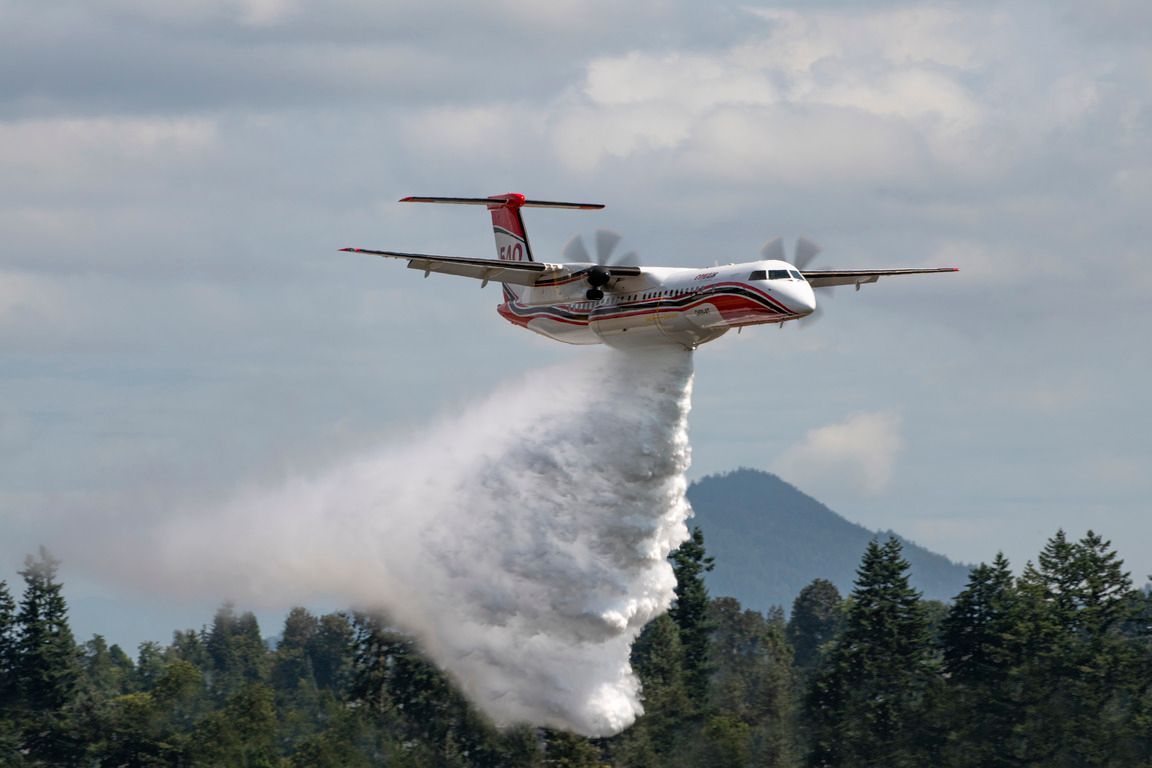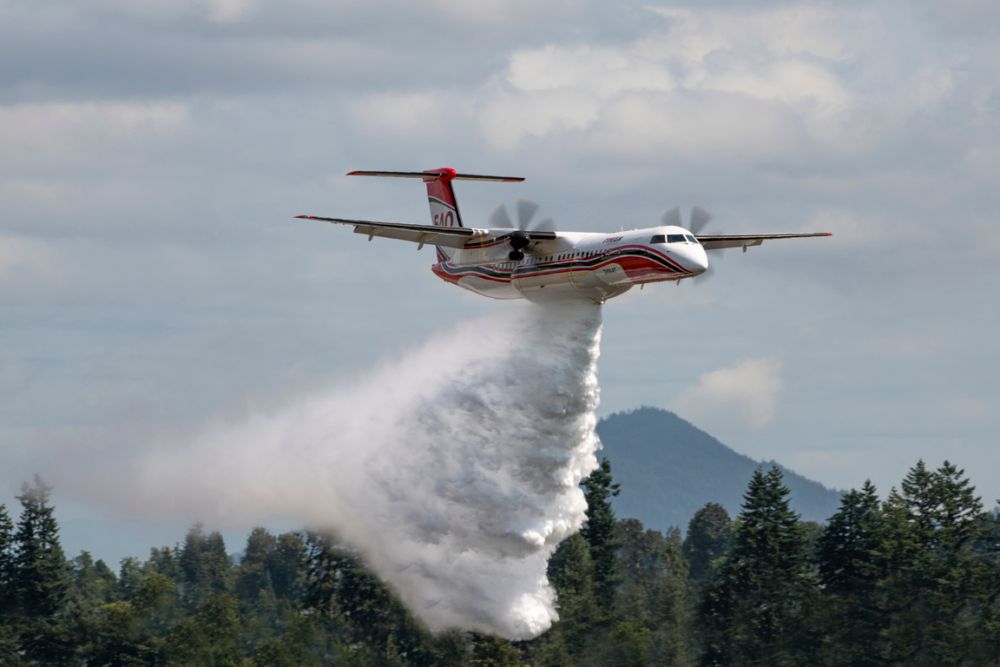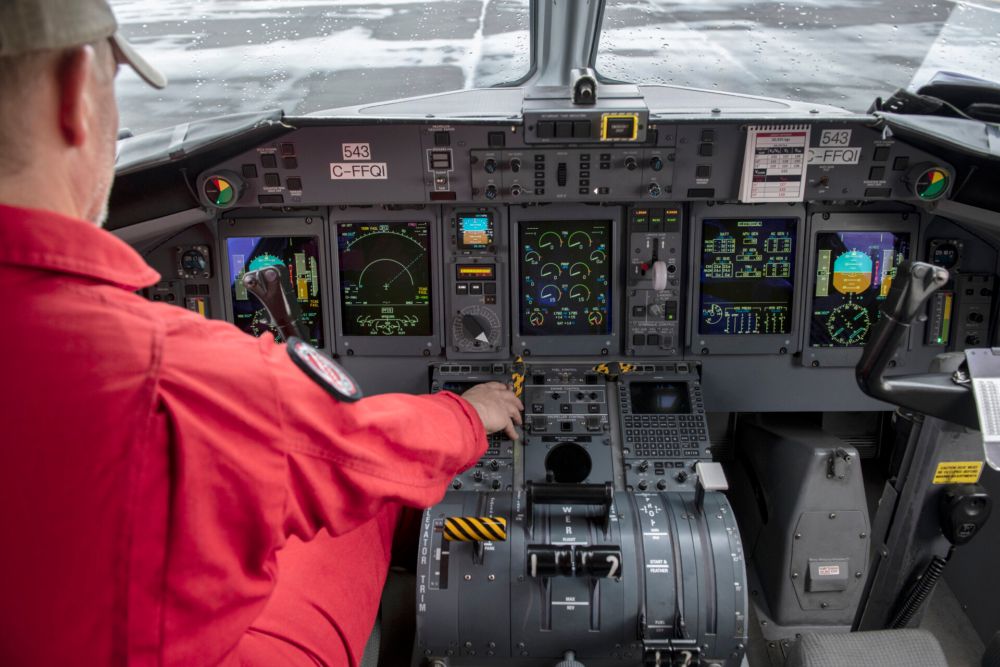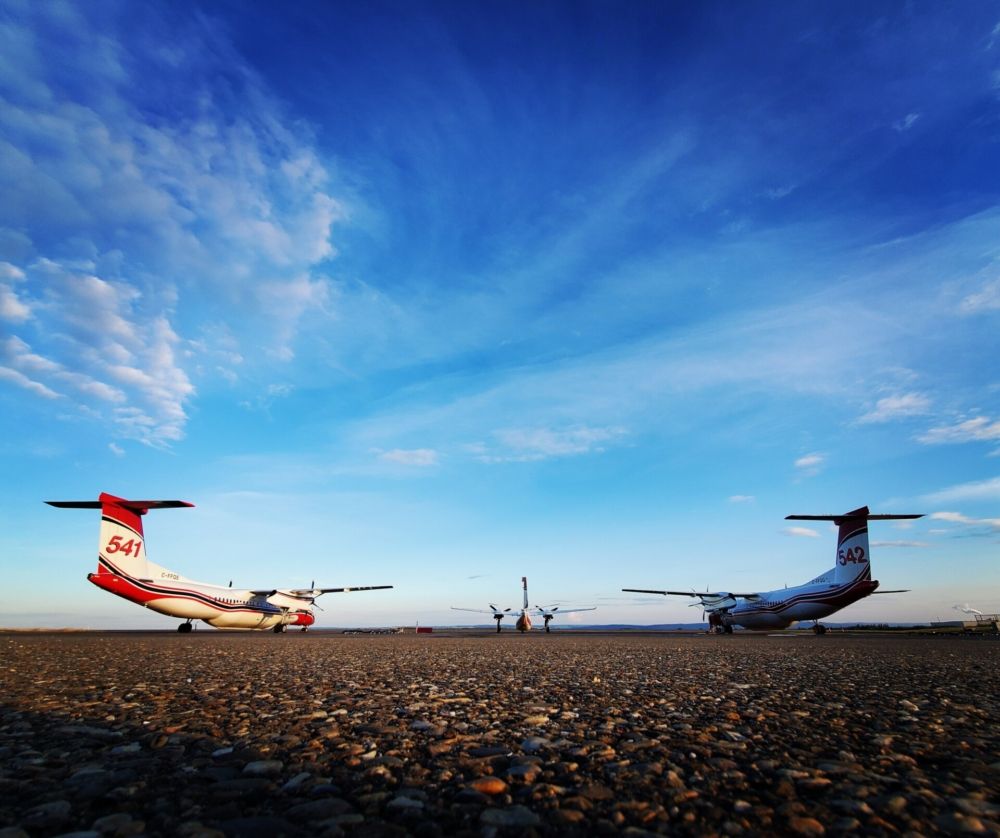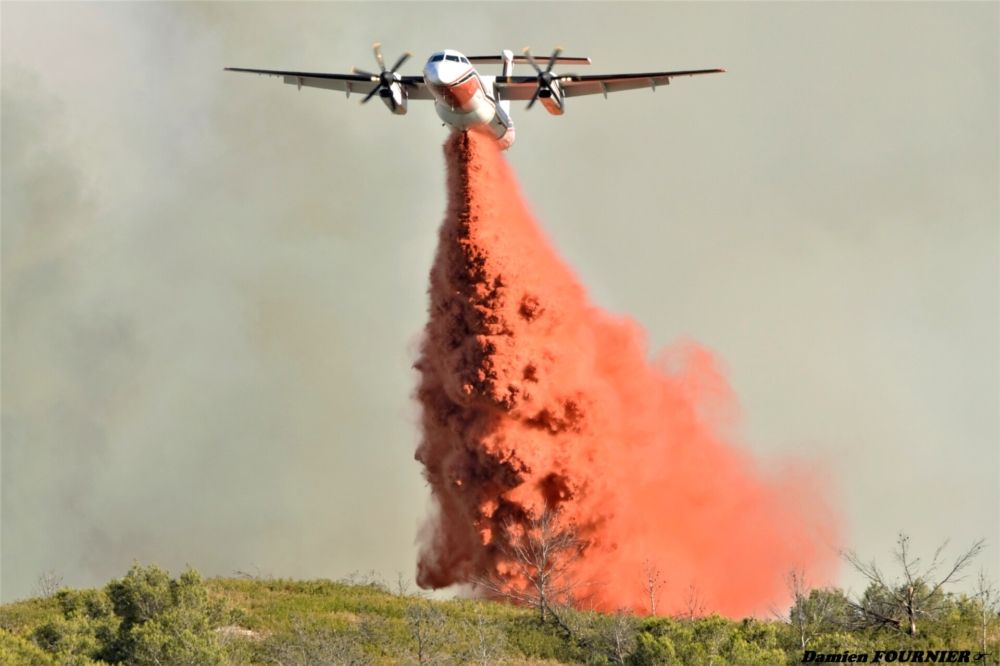The Dash 8-400, or ‘Q’ as it is nicknamed, is a favorite among airlines that handle short-haul services. The turboprop regional airliner can adapt well to hard-to-reach areas in sensitive conditions. However, it's not just passenger carriers that value the aircraft. The type is being called upon to help fight against the world's most dangerous wildfires.
The rising challenge
Conair has been suppressing wildfires and supporting firefighters for over five decades. The Canadian outfit uses Bird Dogs, land-based air tankers, and amphibious aircraft to lead the aerial firefighting industry, supporting government agencies with a team of 350 professionals that fly up to 12,000 flight hours yearly.
Jeff Berry, Director of Business Development, Conair Aerial Firefighting Canada, led the aerial firefighting fleet for British Columbia Wildfire Service (BCWS) in Canada for 17 years before joining his current company eight years ago. His experience working at the provincial government agency gives him a perspective that is unique to the industry. Berry understands what worked well in the past and what can be deployed with fires now, as a result of the changing climate.
Berry recently spoke with Simple Flying about the changing requirements of his industry. He expresses that when he first started fighting forest fires in British Columbia in 1977, his colleagues told him that there was a busy fire season around every 10 years. However, he eventually noticed that a busy season would start to come every seven years. These challenging periods are continuing to get closer.
Notably, there was a record season in 2017, which was broken in 2018. 2021 has also been close to breaking the record three years ago. Climate change is ultimately bringing earlier firefighting seasons and they are running later in the year, with more intensity.
A hot topic
Wildfires have been at the center of political debates this year. The summer of deadly heatwaves and wildfires had put climate change as a focus point of Canada's snap federal election last month following the disaster that saw Lytton, British Columbia go up in flames.
The wildfires in Canada aren't over, with forests burning north of the Hudson Bay on the weekend. Overall, it’s been a grim year for wildfires across North America, and forestry continues to burn across several regions. These events are on top of devastating fires around the world such as those that occurred in the Mediterranean. As a result, authorities have been working intently with organizations to help prepare during the wildfire seasons.
Conair notes that the company does not come up with a fire management strategy. This responsibility is that of the government agency, which is the firm’s customer. Nonetheless, Conair supports the government’s strategy by operating its aircraft as directed. These aircraft combine with the firefighters on the ground by cooling flames and slowing fire progression.
Stay informed: Sign up for our daily and weekly aviation news digests.
The right arsenal
All in all, it’s not just about a water (suppressant) response or a retardant-only response (for line building). It's about utilizing them both, when needed, on aggressive fires.
Conair operates owns and operates approximately 70 different aircraft. So, in that mix, all sizes, shapes, and capabilities of the fixed-wing world are represented. The Canadair CL-415, the Fire Boss, and the wheeled Air Tractor AT-802 can all be found. There are also two different kinds of Bird Dog aircraft, the Commander 690B and the Cessna 208 that Conair uses as strategic and tactical management aircraft that work with the air tanker groups and often communicate with customers who run the show in the airplane. They also communicate with the airline’s pilots to the various air tankers coming over the fire.
The Dash 8-400 and the Avro RJ85 air tankers are also integral members. Thus, Conair has a whole spectrum of planes for a well-balanced fleet.
A balanced solution
Conair highlights the crucial firefighting benefits of the Dash 8-400AT. There are also environmental advantages to be had. The firm notes that the aircraft also offers the lowest fuel burn per US gallon/liter hauled, using just 58% of the fuel while carrying 88% of the load of a typical Type I air tanker, resulting in fewer carbon emissions into the atmosphere.
“The Dash 8-400 air tankers are our latest addition. We've got three operating in North America this year, one in Washington State, on loan from the state of Alaska, and two in British Columbia. One of the three will be repositioned to Australia in late August. So, they are a line building Type II air tanker, they land at an airport and get loaded with retardant. What makes the Q400 a very exciting new air tanker on the market is it's extremely flexible. So, it can work out of most 5,000-foot runways and off of most agencies' existing air tanker base infrastructure. So, it doesn't need a lot of changes in order to do that,” Berry told Simple Flying.
“It's extremely fast. For a turboprop air tanker, it keeps up with most jets. It climbs quicker than most jets, and it's got a really good dash speed to get to the fire. It's also extremely fuel-efficient. It burns less than half the fuel, flies as fast, and can operate off of a shorter runway. So, it's tactically flexible, its fuel-efficient, and it's fast. It's also very manoeuvrable over the fire. It's got good downhill run capability and is extremely good at low speeds. With drop speeds of 120-125 knots there's a lot of margin.
“Also, the Q400 is very reliable. Being a relatively new aircraft, we've got tonnes of spare parts. We’ve got virtually new engines and lots of suppliers out there. So, obsolescence, widespread fatigue damage, all those things that begin to creep into older aircraft - we're a long way away from that with the Q400. Therefore, it gives us a sustainable platform that's extremely versatile for the long term.”
With the aviation industry having sustainability at the forefront of its mission, Conair has invested in 11 former Flybe planes. The company will convert these units into air tankers in the coming years, replacing the legacy fleet of CV580s.
Clear objectives
Altogether, climate change is a direct cause of the rise of wildfires across the globe. As a result, those helping to put out the fires will undoubtedly be keen to deploy aircraft that are more environmentally friendly. Subsequently, along with the several firefighting capabilities of the Dash 8-400AT, the plane is the perfect tool amid the challenge to operate more sustainably.
What are your thoughts about the Dash 8-400 air tanker and its role in firefighting? What do you make of the overall missions of Conair? Let us know what you think in the comment section.

